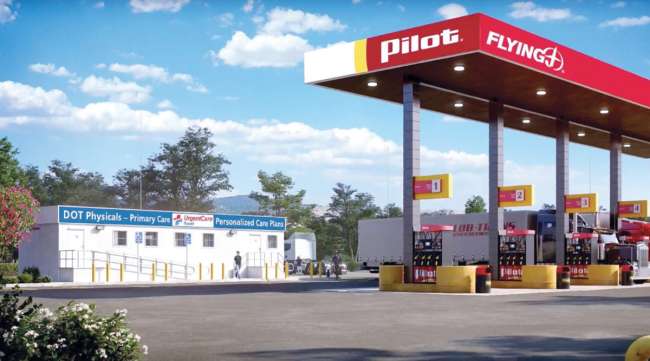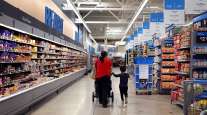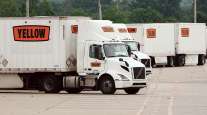Staff Reporter
Focus on Driver Health Renewed Amid Outbreak

[Stay on top of transportation news: Get TTNews in your inbox.]
Companies are taking steps to ensure that truck drivers have access to adequate information and medical care to mitigate their risk of contracting the COVID-19 virus.
UrgentCareTravel, which operates walk-in clinics at 13 Pilot Flying J truck stops, has launched the Driver Coronavirus Evaluation Service, which gives drivers the opportunity to connect with medical professionals from the road. The company is securing test kits and personal protective equipment, such as masks, gloves, eye protection and gowns, for its facilities, and the service will be available to anyone, including truck drivers and clinical workers.
“There’s no reason we should discriminate in this area,” said Mitch Strobin, the company’s senior vice president of marketing and relationship management. “We are working to get test kits and the personal protective gear at all the clinics.”
A 14th location, in Hubbard, Ohio, will open soon, but the UrgentCareTravel clinics’ locations represent a small fragment of Pilot’s more than 780 travel centers. Pilot CEO Jimmy Haslam said in a statement that coronavirus testing remains unavailable at the company’s other travel centers.
While Love’s Travel Stops doesn’t currently offer COVID-19 testing, the company has developed a task force to monitor the pandemic and provide education and guidance to its employees. Love’s spokeswoman Caitlin Campbell said the company has increased disinfecting efforts at its locations and converted self-service refreshment options, such as roller grills, drink bars and delis, to full-service by Love’s staff.
Kevin Neely, director of marketing for Ambest Inc., indicated that while the company does not have a way to equip its truck stops with COVID-19 test kits, all of its independently owned locations remain open, and some have adjusted hours and food services.

Kane
While the alert level is currently high, monitoring driver health is year-round effort, noted Stephen Kane, president of Rolling Strong, which specializes in professional driver wellness programs. Kane — who was a truck driver for 12 years — said drivers are twice as likely as the general population to have obesity or diabetes, and said some 17% of them are morbidly obese. Rolling Strong has launched a task force to develop educational materials specifically about the coronavirus, and has created videos on reducing contact with touch points (such as fuel pumps and weigh station scales), managing stress and making your own hand sanitizer. About 48% of truck drivers have a chronic condition, such as diabetes or hypertension, Strobin said.
In terms of coming into contact with the virus, Kathleen Cartmell, an associate professor within Clemson University’s Department of Public Health Sciences with a background in epidemiology, said a driver’s level of exposure would probably depend on the nature of his or her work. A longhaul trucker would probably interact with fewer people than a delivery driver who frequently makes stops and asks people to sign for packages. She said basic precautions such as frequent hand-washing, sanitizing surfaces and covering your mouth when you cough are important, and noted that only care providers or people with the virus need to wear a mask.
One of the things Cartmell said she “took home” from being an epidemiologist was the importance of maintaining a buffer of at least 6 feet when sharing space with a sick person. In addition to taking walks to facilitate blood circulation and engaging in social interaction for emotional well-being, Cartmell encouraged drivers to meet with people outside rather than in a tiny office whenever possible.
“It’s always nice and safe when you have lots of open air available,” Cartmell said. “The virus would be able to dissipate a lot easier than it would in a closed setting or in a place where an air conditioner is pushing the same air around.”

Strobin
UrgentCare’s Strobin said a person can initiate the coronavirus testing procedure by calling one of its clinics. From there, the call will be identified as informational or a patient encounter, which will require closer medical attention. In cases where the call is determined to be a patient encounter, the user will be directed to download a video-based app that facilitates chats and video calls with healthcare professionals.
“We’re using the video platform because I think drivers like to see someone and feel like there’s someone caring and looking at them eye-to-eye,” Strobin said. “We think that’s just a valuable way to do things. We’re keeping it all in-house to have some level of continuity of care.”
Even though UrgentCareTravel locations, like many clinics, sanitize surfaces and equipment frequently, large groups of people can increase the odds that viruses will spread. The Centers for Disease Control and Prevention have urged people to limit large gatherings.
“I think this is just a safer approach,” Strobin added. “Not everyone needs a test. But, if you didn’t have this telemedicine-based service, everyone would come to the clinic. It’s just a good first step.”
Want more news? Listen to today's daily briefing:




